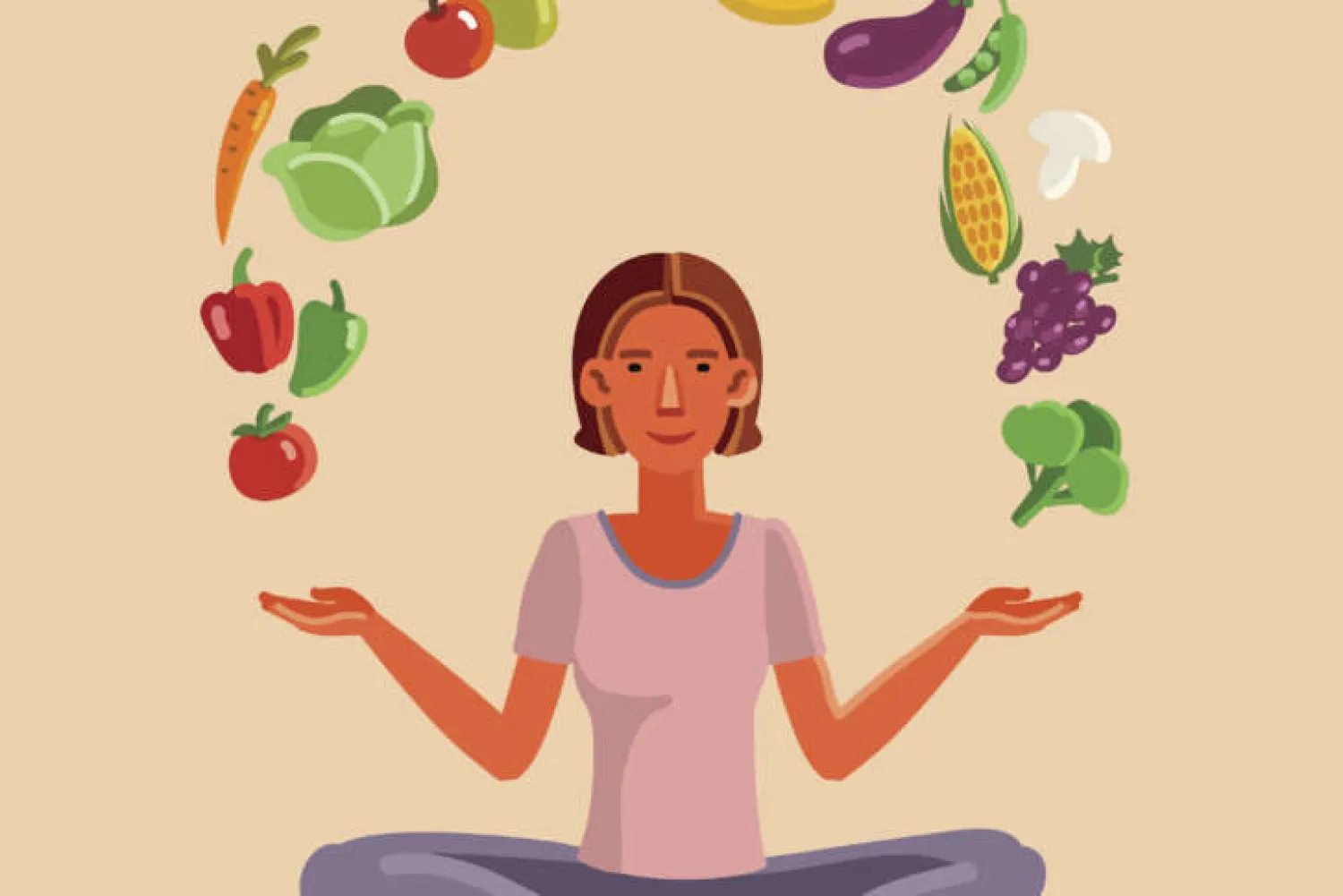Of all the recommendations for preventing heart disease, maintaining a healthy weight tops the list. Excess weight can raise your blood pressure, blood sugar, and cholesterol values, all of which harm the heart. But with about one in three Americans now overweight or obese, weight loss clearly remains a stubbornly elusive goal for many people.
One strategy that's gained traction in recent years is to focus less on what you eat and more on how and why you eat. How? By practicing mindfulness, which teaches you to focus on the present moment, while peacefully acknowledging and accepting your feelings and thoughts and the sensations in your body. Granted, that may sound a bit touchy-feely. But a review of a dozen studies, published in the March 2018 Current Obesity Reports, concluded that there is strong support for including mindful eating practices in weight management programs.
Why mindfulness matters
One of the main benefits of mindfulness approaches for weight loss is to help people recognize emotional eating, says mindfulness expert Dr. Ronald D. Siegel, assistant professor of psychology at Harvard Medical School. "Very few of us eat solely based on hunger cues. We also eat to soothe anxiety, sadness, or irritation," he says. That's a recipe for mindless eating: you're operating on automatic pilot, without paying attention to how you really feel, emotionally or physically.
Mindfulness practices help you notice these common patterns, which are similar to what happens with many types of addiction, says Dr. Siegel. Most human behaviors are based on conditioned patterns of seeking pleasure and avoiding pain. Those behaviors we refer to as addictions have good short-term consequences (the pleasure of eating a piece of chocolate cake) but bad long-term consequences (becoming overweight).
Notice your cravings
People with addictive behaviors are prone to what addiction expert G. Alan Marlatt called the abstinence violation effect. For example, you might have a plan to eat healthfully, but then you see a chocolate cake. "You break down and eat a piece, but then feel so horrible about your lack of self-control that you feel a desperate need to self-soothe — and end up eating the rest of the cake," says Dr. Siegel.
Once you become aware of these patterns, the next step is finding a way to cope with cravings. Simply avoiding tempting foods is difficult, because tasty treats are widely available nearly everywhere you go. Mindfulness can help you notice the craving and recognize that you can deal with the discomfort, which may be accentuated by unhappy emotions. By turning your attention to those feelings and practicing self-awareness, you can see that the feelings come and go. "Urges and cravings come in waves, and we can ride them out," says Dr. Siegel.
Self-acceptance and defusion
Another aspect of mindfulness training is self-acceptance. If you do give in to a craving, forgive yourself and move on. "None of us is perfect — you don't have to torture yourself," Dr. Siegel says. Four of the 12 studies in the recent review article focused on acceptance-based behavior training, which relies on mindfulness strategies to identify emotions rather than avoid them.
In one small study of people with heart disease, participants were encouraged to recognize that eating healthfully and exercising is really challenging and that pretending that it isn't just makes it all the more distressing. Instead, they were taught a practice called defusion, in which you distance yourself from unhelpful thoughts, feelings, and beliefs. This helped them tolerate the distress of trying to make heart-healthy behavior changes. Participants gave high marks to the program and made positive changes in their diet and exercise habits.
Among the other promising strategies noted in the review were various types of mindfulness meditation, such as an eating-focused practice in which people were taught to acknowledge their hunger levels, emotions, thoughts, motivations, and eating environment with acceptance but without judgment. The practice was most effective when combined with self-compassion, which involved repeating phrases of goodwill and benevolence for oneself and others.
Getting started: Mindfulness training
If you're trying to lose weight and struggling with mindless eating, you can get started with some simple tips (see "How to practice mindful eating"). The Center for Mindful Eating (www.thecenterformindfuleating.org) has more in-depth information, including free mindful eating meditations, newsletters, webinars, and teleconferences. You may be able to find in-person coaching as well, as growing numbers of nutritionists and programs — ranging from spiritual retreat centers to hospitals and medical centers — offer instruction in the technique.
How to practice mindful eating
Eating while you're busy doing other things — watching TV, scrolling through your email, or reading the newspaper — robs you of the chance to enjoy your food fully. You may not feel satisfied and simply keep eating, even if you're not actually hungry.
Here are some tips for eating more mindfully:
Sit in a pleasant, calm environment with no distractions, with the exception of your meal companions.
Ponder what it took to produce your meal, from the sun's rays to the farmer to the grocer to the cook.
Try eating with your nondominant hand; if you're a righty, hold your fork in your left hand when lifting food to your mouth.
Set a timer for 20 minutes and pace yourself so you spend at least that much time eating.
Put your utensil down between bites.
Take small bites and chew them well, noticing the different flavors and textures of each mouthful.
Before you help yourself to seconds or dessert, pause and take time to consider whether you're actually hungry.
(Harvard Health Letter)









